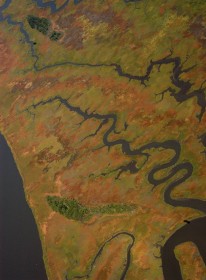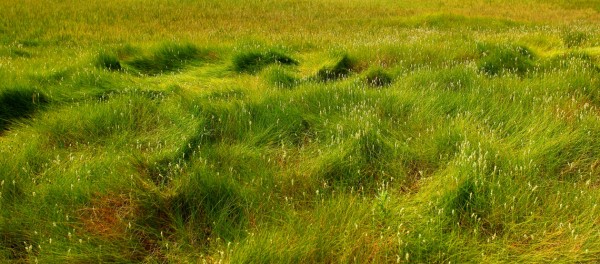New Study Investigates Nest Predation on High Marsh Species
Camellia Near Dam Neck & London Bridge Rds 3/27
March 28, 2013Camellia Remains Near London Bridge Rd 3/28
March 30, 2013

Marsh complexes in the Chesapeake Bay contain a mixture of diverse habitat components that are essential to different bird species. Habitats for marsh birds are often mediated by physical conditions of elevation, hydrology, and salinity. Marsh birds also respond differently to features such as tidal guts, floristics, and the upland habitat matrix. Photo by Bryan Watts.
Tidal saltmarshes are one of the most characteristic habitats within the mid-Atlantic region and are important to the regional avifauna. The endemic saltmarsh bird community is comprised of two functional groups of species that are separated by their use of the high-marsh versus low marsh zones. Species that are restricted to the high marsh zone include the American black duck, willet, black rail, sedge wren, saltmarsh sparrow, and Henslow’s sparrow. The other group of species includes the clapper rail, Virginia rail, and seaside sparrow that utilize both marsh zones but reach their highest densities in the low marsh. Although there is concern for the population status of both groups, the suite of species that use high marsh habitats are among the most imperiled. Black rail populations in the Chesapeake Bay have declined nearly 90% over the last 15 years. The coastal form of the Henslow’s sparrow may have been extirpated from Chesapeake marshes during this same time. Without management intervention, it is believed that black rails will be extirpated from the Chesapeake Bay as well as from other regions in the Mid-Atlantic.
The vulnerability of the high marsh species suite is likely a combination of factors such as sea-level rise, Phragmites invasion, and nest predation. However, it is difficult to separate the relative contribution of these factors to high marsh species declines without more detailed investigations. High marsh species are considered particularly susceptible to mammalian nest predators because their habitats are easily accessed due to low water levels and the close proximity of the high marsh to an upland source of predators. In general, nest predation rates are inversely related to water levels and possibly distance from the upland.

Flowering saltmeadow hay (Spartina patens) within a high marsh zone of the Chesapeake Bay. Habitats such this are essential to high marsh nesting birds such as the Black Rail, Saltmarsh Sparrow, and Willet. Photo by Bryan Watts.
We will begin a study in the spring/summer of 2013 that is designed to investigate the role of nest predation on reproduction rates for selected high marsh birds by finding and monitoring marsh bird nests and by using artificial nests. The study will also include the examination of factors that may influence nest predator access to nests such as water level, marsh patch size, and proximity of marsh zones to uplands. We expect the results from this study to either highlight the need for abatement of nest predation through management or to indicate the need to explore alternative explanations for the decline of marsh birds. We are also pursuing a separate study on the influence of rising sea levels on high marsh habitats so we may successfully identify the causes of marsh bird population loss from demographic and/or habitat issues.
Written by Mike Wilson
March 29, 2013



